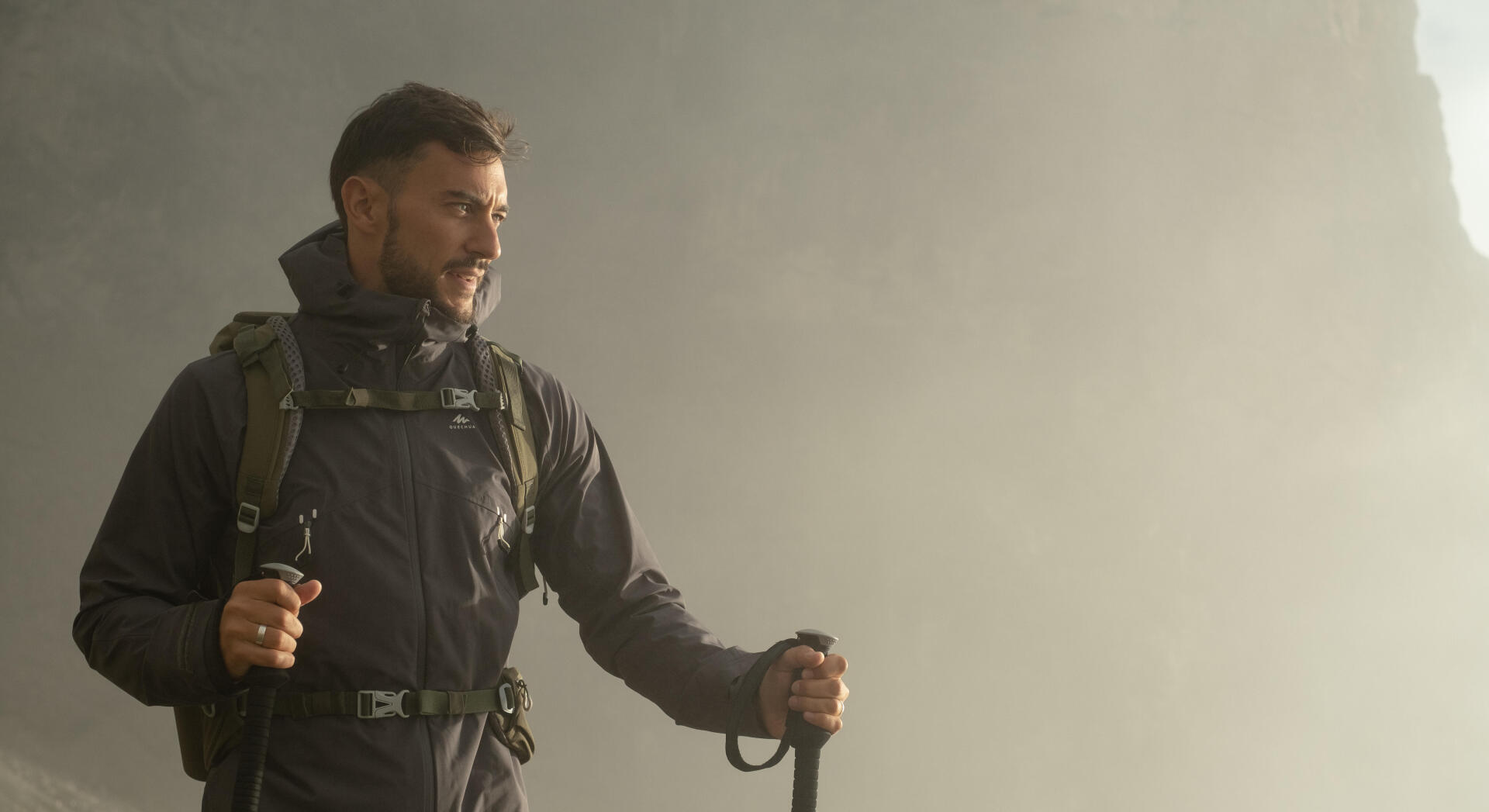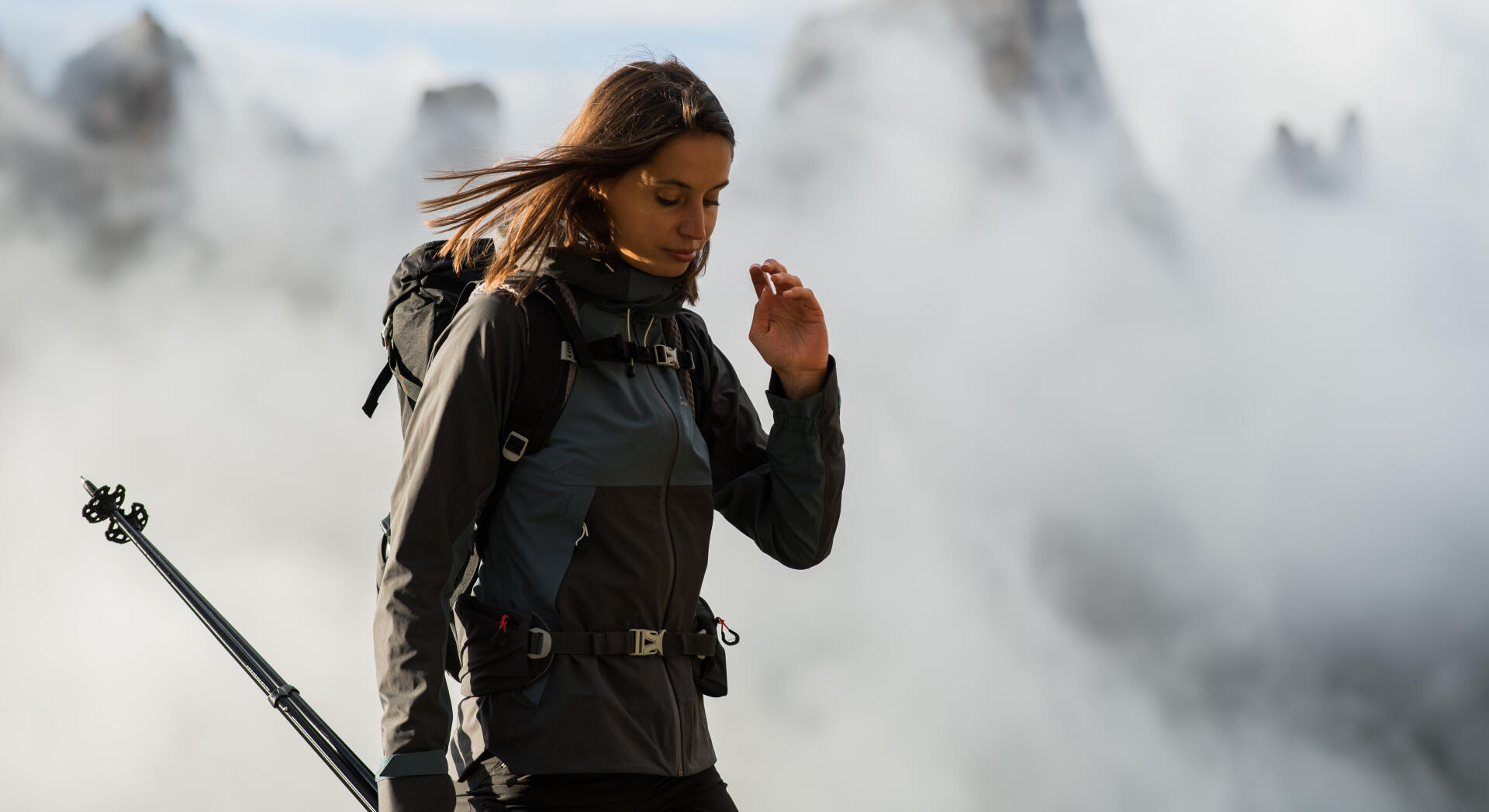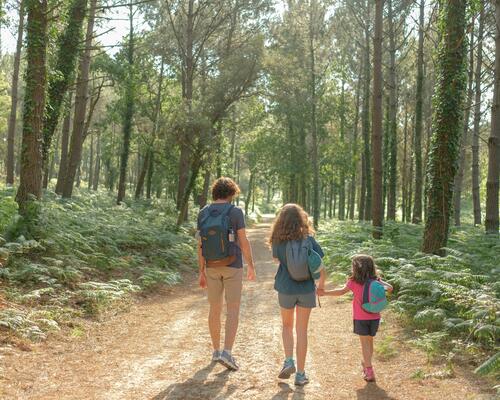Elevation gain:This term refers to the difference in altitude between 2 points. The French translation ("dénivelé") has long been the subject of discussion, because of its gender... Historically feminine ("dénivelée"), the word has "erroneously" been used in the masculine form, without the extra "e". It is this unconventional version that is now the most frequently used form.
Overhang: Not to be confused with the elevation gain. An overhang corresponds to the slope angle of a rock face. The word overhang is used when the slope angle exceeds 90°.
South and North face: The south face is the slope of a valley that is exposed to the sun for longer. Conversely, the north face is the opposite side.
Upstream and downstream: The terms upstream and downstream are very useful for getting your bearings. On a trail between a mountain pass and the valley for example, the upstream side is the one that points to the mountain, whereas the downstream side is the one that points towards the valley.
Névé: A névé is an area of persistent isolated snow (snowfields can be found even in the summer). Névés usually form in areas where there is little sun exposure. Do not confuse them with permanent snow.
Permanent snow: (Or the "snow line") these are located on the mountain peaks where the period of snow cover lasts longer than the period during which there is no snow cover. Because of a number of factors (sunshine, atmospheric pressure, etc.), the precipitation in this area is mainly in the form of snow, which keeps the peaks covered in snow... That's why the snow cover is not really "permanent" but regularly renewed!
Glacier: Mass of ice formed by the accumulation of layers of snow. A glacier comprises several parts: the rimaye, the moraine, the seracs, etc.
Rimaye (pronounced"reemay"):This is the crevasse that forms on the edges of the glacier and separates it from the surrounding environment. The area between the glacier and snow or ice slope is referred to as the bergschrund; the area between the glacier and rock wall is referred to as the randkluft. They are formed by from the movements of the glacier.
Moraine: The moraine is composed of all the rock debris transported by the movements of the glacier.
Serac: Large block of ice, partially detached from the glacier. Seracs are formed when the glacier cracks.
Gully: Very narrow, steep-sided corridor of snow or ice, which often forms in diedres (groove or corner where 2 sections of rock meet to form an acute angle).
Cirque: Name given to the valley of a mountain that has a circular or semi-circular shape (like an amphitheatre). This shape may be the result of erosion, or indicate there used to be an ancient glacier or volcano in this location.
Cornice: Snow formation formed by the wind on a ridge. This build-up of snow often forms a self-supporting balcony that hangs over the ridge. It represents a hazard if it should fall.
Flake: Slab of rock that comes off a face.
Limestone pavement: A geological formation that occurs on limestone rocks and is formed when rainwater cuts into the rock. These formations can be dangerous when hiking, because you can end up walking on areas of rock that are extremely uneven and often very sharp. In winter, the rock holes are covered with snow and therefore invisible so you're better off avoiding this type of terrain.







